How to Fix Mac Startup Issues [6 Excellent Solutions Provided for Mac Users]
We have a chart to guide you to the six methods and fix Mac startup issues:
| Workable Solutions | Step-by-step Troubleshooting |
|---|---|
| Fix 1. Force Shut Down Mac | Hold the Power Button of your MacBook. Every MacBook possesses a power button, which can be...Full steps |
| Fix 2. Reset NVRAM/PRAM | Restart your MacBook, and press the "Command + Option + P + R for 20 seconds to reset NVRAM...Full steps |
| Fix 3. Reinstall macOS | You must be sure about proper internet connection while reinstalling macOS. Boot your Mac...Full steps |
| Fix 4. Run Disk Utility First Aid | Boot Mac into Disk Utility and click "Continue". You should start the process by picking the...Full steps |
| Other Solutions | If your MacBook has a severe hard drive failure, replacing the drive is the best...Full steps |
Mac Startup Issues Overview
Everybody has faced Mac startup issues, which looked like you're about to start your daily work, hit the power button of your Macbook, and the apple logo doesn't pop up! In case you're an Apple fanatic, you must have suffered from several MacBook startup errors, which are macOS Ventura won't boot, it is stuck in the loading screen, it doesn't start up as anticipated, or there could be Mac stuck on the Apple logo. However, some of the vital Apple Mac boot-up issues are:
- Question mark folder icon
- Black screen during boot
- Infinite loading bar
- Turns off while booting
Whenever this ensues, you might be perplexed about what to do before commencing your work! But you shouldn't worry, as this article brings the best solutions on how to fix Mac startup issues. So, without further delay, let's discuss the top 6 methods to troubleshoot Mac startup errors!
How to Troubleshoot Mac Startup Issues [6 Methods]
To fix Mac startup issues, these are the top 6 solutions to fix the issue:
Fix 1. Force Shut Down Mac and Restart It to Fix Startup Issues
Force shutdown means what you usually execute to fix frozen MacBook or Mac freeze. Therefore, if this happens with your MacBook, and it shows a blank screen, you may force shut down and restart it. However, follow these steps below to force shut down Mac:
Step 1. Hold the Power Button of your MacBook. Every MacBook possesses a power button, which can be found at the top-right side of the touch bar. In the case of an iMac, the power button is located behind the bottom-left side of the screen.
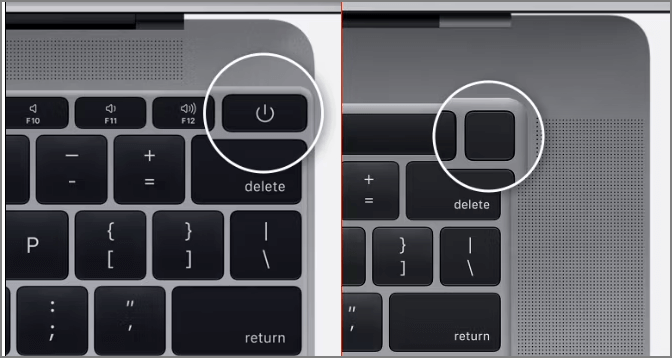
Step 2. Use a keyboard shortcut. To shut down your Mac safely, you must press "Control + Option + Cmd + Power." This shortcut may not work if your MacBook cannot safely close every application. Hence, you must force the Mac to turn off instead! Now, you should press "Control + Cmd + Power" and hold these keys for a few seconds, leading to a shutdown of your Mac.

Fix 2. Reset NVRAM/PRAM and SMC on Your Mac
PRAM or NVRAM is the smaller memory preserving the boot-up details of your macOS. Both are similar, but the latest MacBooks use NVRAM instead of PRAM. However, if the MacBook takes significant time to boot, resetting NVRAM would be the best-in-class option as it will help resolve startup disk problems back to its default settings. Follow the steps below to reset NVRAM:
Step 1. Restart your MacBook, and press the "Command + Option + P + R for 20 seconds to reset NVRAM.
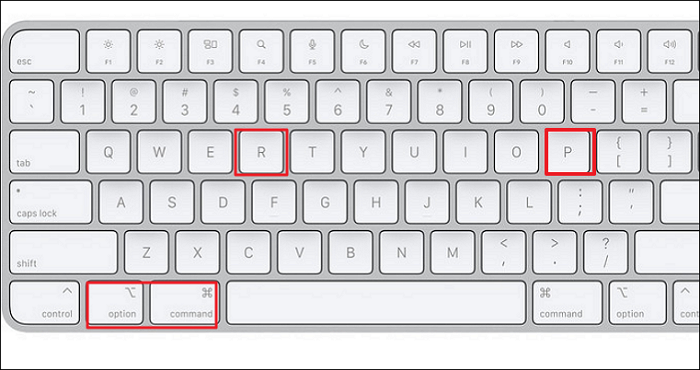
Step 2. Release those keys and let it startup normally.
[N.B: For outdated Macs, which chime during boot, the four keys need to be held until you hear a second chime.]
We will show you how to reset SMC on Mac in the following part:
SMC tackles everything from battery management to keyboard backlight to what occurs when you hold the power button of your MacBook. Hence, resetting SMC is the best option if your MacBook won't start. These are the important steps below to reset the SMC without any hassle:
For MacBooks With the T2 Security Chip and 2018 MacBook Pro:
Step 1. Press down the right "Shift" key, Alt, and the Control key on the left for approx 7 seconds.
Step 2. Now hold down for the next 7 seconds while keeping these keys held.
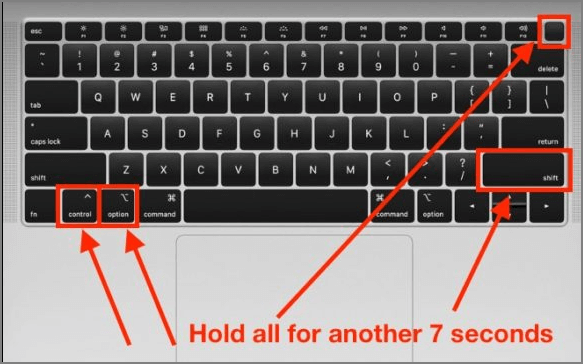
Step 3. Wait for a few seconds after releasing all the keys, and after that, restart.
For Desktop Intel Macs:
Step 1. Wait for 15 seconds after unplugging the power cord.
Step 2. Wait for another 5 seconds after plugging the cord back in.
Step 3. It's time to restart your Mac.
Fix 3. Reinstall macOS Ventura or Older macOS Version
If everything falls apart, the best way to fix Mac startup issues is to reinstall macOS Ventura. Fortunately, you will never lose your critical documents while reinstalling macOS as it utilizes a similar process to upgrading. Follow the steps below to reinstall macOS:
Step 1. You must be sure about proper internet connection while reinstalling macOS.
Step 2. Boot your mac in recovery mode by executing the restart while pressing Command + R until you listen to the startup chime.
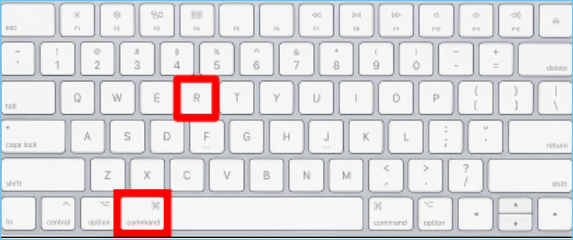
Step 3. After that, you should opt to reinstall macOS from macOS utilities.
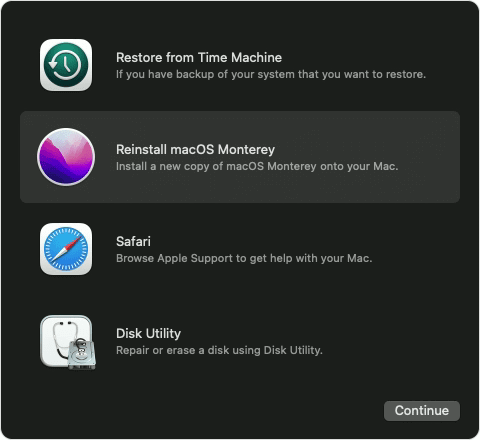
Fix 4. Run Disk Utility First Aid to Check and Repair Mac Disk
In case there is something bad about Mac's startup disk, you may run disk utility. After that, you can utilize it to repair a Mac disk with Disk Utility.
Step 1. Boot Mac into Disk Utility and click "Continue".
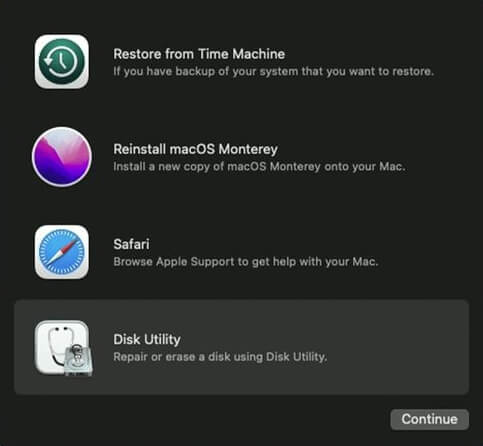
Step 2. You should start the process by picking the last volume on the disk for every disk you want to repair, and after that, hit the First Aid button or Tab.
Step 3. You should hit "Run" to troubleshoot the chosen volume for errors.
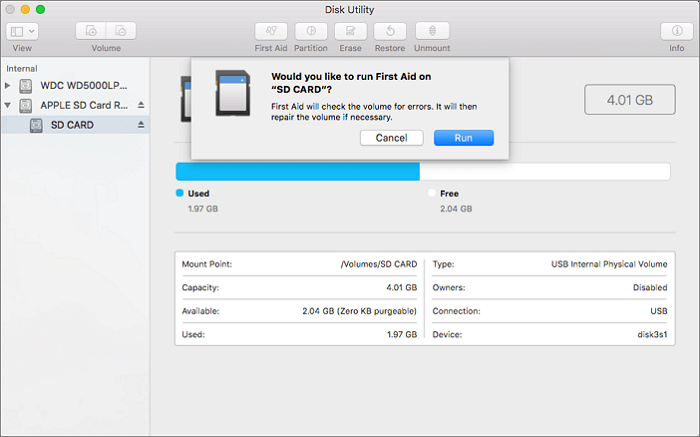
Step 4. Provide the admin password when you're asked for one for disk unlocking.
Step 5. Choose the item immediately ahead of it in the sidebar when Disk Utility has finished inspecting the disk, then launch First Aid again. Continue working your way up the list, doing First Aid on the disk's volume, container, and, ultimately, the disk.
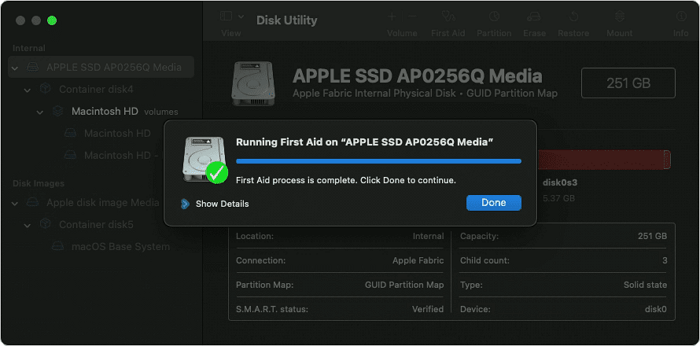
Step 6. Exit Disk Utility when finished. Now that your Mac has been restarted, if you utilized Disk Utility from macOS Recovery: choose Restart under the Apple menu.
Fix 5. Replace the Damaged Mac Hard Drive to Fix Mac Startup Issues
If your MacBook has a severe hard drive failure, replacing the drive is the best way to eliminate this error. You may opt for a hard drive replacement to inspect and replace the corrupted Mac hard drive. Although the drive can't be replaced this way, it benefits Apple. The steps to replace the damaged Mac hard drive are the following:
Step 1. Opt for About this Mac to check the hard drive model from the system information.
Step 2. Hit the "System Report" to get a detailed overview.

Step 3. Select "Storage" from the sidebar for more details about the drive. This is how you can discover which startup disk your MacBook is using and replace the damaged one.
Fix 6. Fix Mac Startup Issues by Contacting Apple Support Service
If nothing works with all the above solutions, it would be better to contact Apple support service.
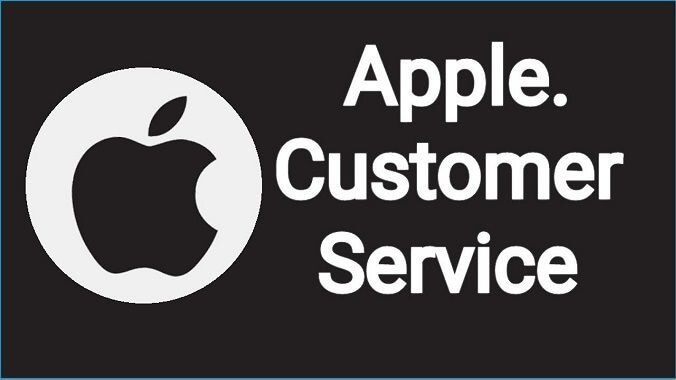
Recover Data With Software When Your Mac Has Startup Issues
Has your Mac lost some of your vital data while you're solving the startup issues? Or do you want to rescue data when your Mac has startup issues and cannot boot? You must not worry as there is a portable Mac data retrieval tool, Deep Data Recovery for Mac.
This professional tool supports Mac Trash Recovery after emptying trash bins or accidental deletion. Furthermore, it can solve distinct data loss cases and retain files, irrespective of their sizes, from a single Office Word document to loads of pictures you preserve on a Mac.
Deep Data Recovery for Mac can retrieve data from partition loss, formatting, operation error, and system crash. Moreover, this Mac data recovery software can help you build a bootable media to retrieve data from unbootable or crashed systems and has a high success rate of data recovery.
Get the Mac version of Deep Data Recovery now and follow the tutorial to create a bootable media and recover your lost files:
How to Create a USB Bootable Media
Step 1. Install and run Deep Data Recovery for Mac on another Mac computer, and select "File > Create Bootable USB". Then, choose a USB drive to create the bootable disc.
- Warning
- The creator will prompt to erase the drive to reallocate the space; then it can write the bootable files to this drive. Please back up all USB files before processing "Eraser".
Step 2. The program starts to create a 2GB space and save the boot files. The rest space on the USB can be still used for storage.
Step 3. Once it completes, please follow the guide to boot the corrupted Mac from the bootable disc and start the recovery. We suggest you restore the data to an external hard drive.
How to Recover Data from Mac Hard Disk
Step 1. Launch Deep Data Recovery software. Select file types and click "Next" to start
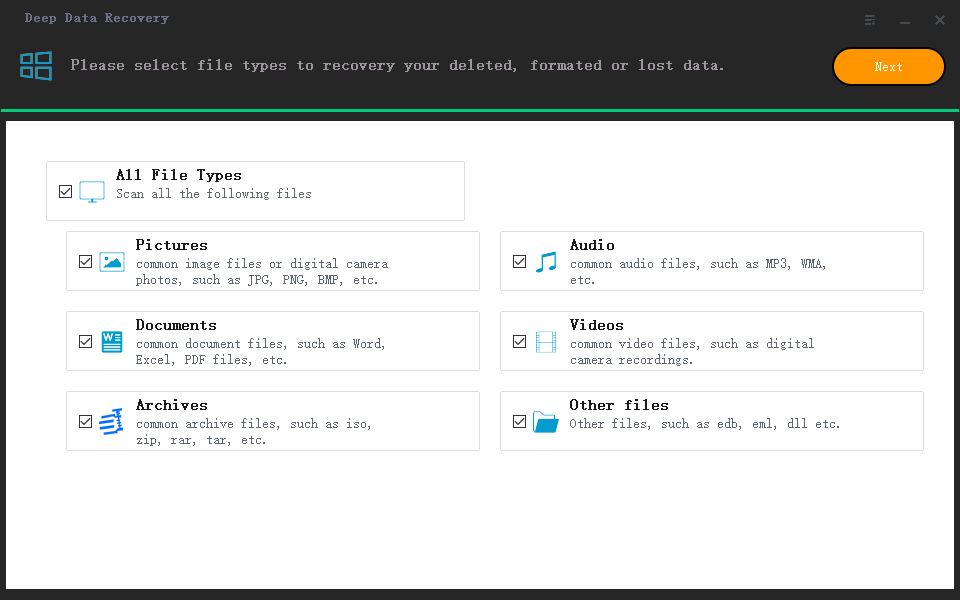
Step 2. Select the disk location (it can be an internal HDD/SSD or a removable storage device) where you lost data and files. Click the "Scan" button.
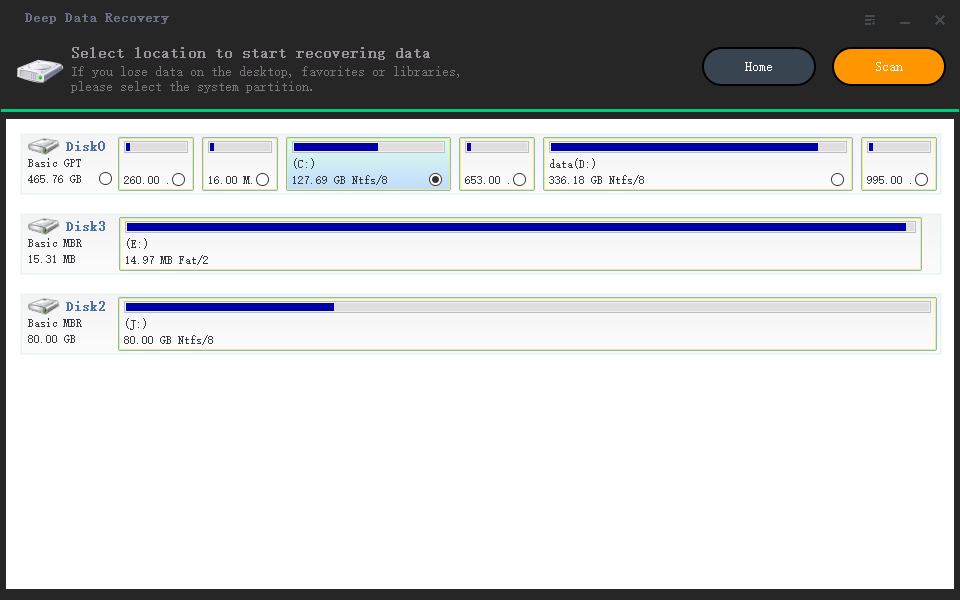
Step 3. Deep Data Recovery for Mac will immediately scan your selected disk volume and display the scanning results on the left pane.
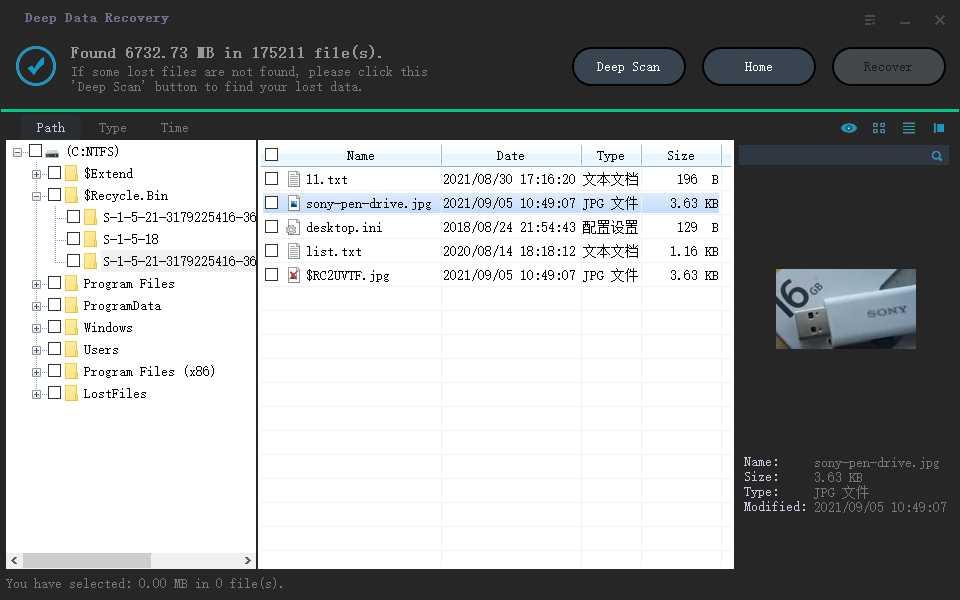
Step 4. In the scan results, select the file(s) and click the "Recover" button to restore data from Mac.
Conclusion
In case you're stuck with Mac startup issues, the aforementioned 6 methods are the best solutions to get rid of every issue. However, your files might be lost while fixing this error! But you must not worry, as Deep Data Recovery for Mac is a professional tool for retrieving the files you have lost during the process. So, it's recommended to download this tool now!
Mac Startup Issues FAQs
These are some of the best FAQs to eliminate Mac startup issues:
How to fix Mac stuck on the Apple logo?
Follow the steps below to eliminate the freezing problem like Mac stuck on Apple logo:
- Press down Mac's power button for 10 seconds, and let it turn off.
- Turn your MacBook on.
- In case the problem continues, press and hold the power switch again until it turns off.
- Turn it back on.
Why does my Mac keep glitching and restarting?
Your Mac's software or any attached gadgets are often to blame for sudden restarts. Your Mac may finally shut down if the problem forces a restart each time it tries to start up.
How to fix the question mark on the Mac startup screen?
If you remove a program from your Mac while its icon is still in the Dock, the symbol is hidden by a question mark. Drag the symbol out from the Dock until "Remove" is shown to get rid of the question mark.
How do I rescue data when Mac has startup issues?
When it has starting problems, you must use the Mac edition of Deep Data Recovery to recover your important data.
Related Articles
- How Do SD Cards Work on Different Devices [Android/Camera/Switch/Laptop]
- Fixed: How to Recover Files When Windows 10 Desktop Icons Are Missing
- 2023 Tips| Are You Sure You Want to Copy This File Without Its Properties [Fixed]
- Fix HDD Hard Drive Not Showing Up in Windows 10 Error